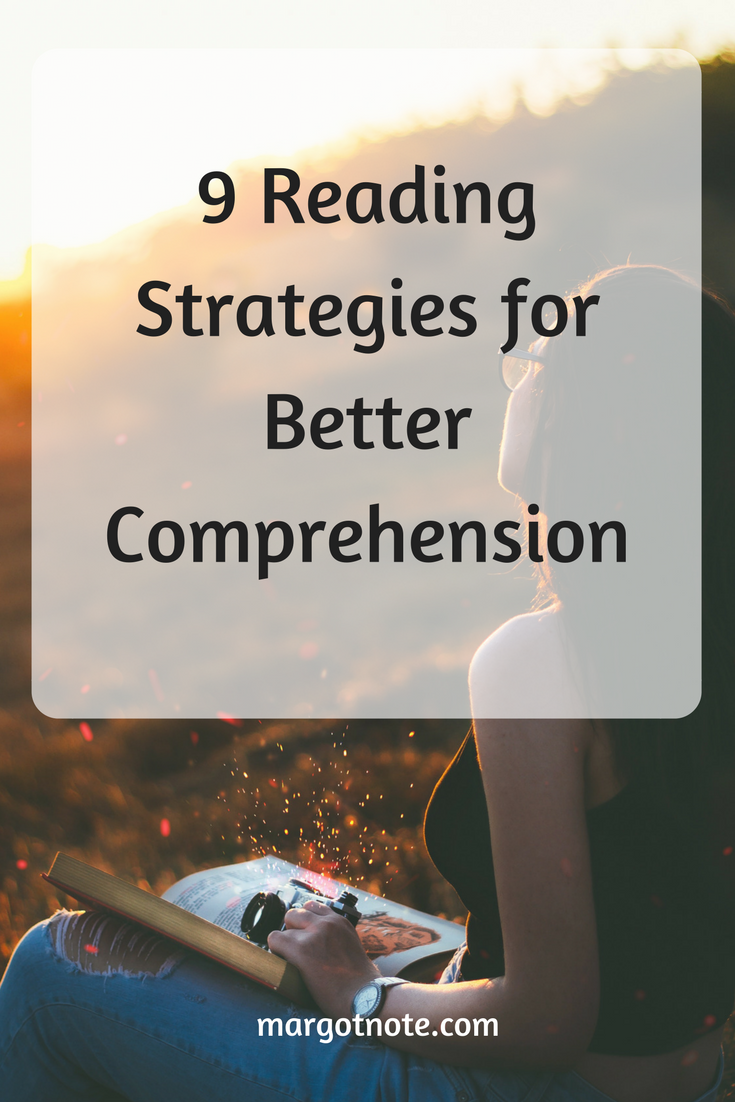There are a variety of reading methods that can help you take in more information, make your efforts more efficient, and save time. A professor in graduate school once told me that students are never expected to complete all the readings; instead, they learn how to prioritize their reading so that they can get the essence of the texts.
Learning that took the pressure off of me to read my texts from cover to cover. I aimed my attention at the parts of the books and articles that would serve me best as a student. With this plan in mind, I found that my retention of knowledge increased and my stress was reduced.
Here are some strategies for reading:
Purpose-Led
Having a purpose for reading is one of the main reading strategies. If you know what information you are looking for in the text, it is easier for you to stay focused. The purpose for reading can vary. It may include finding answers to specific questions, getting an overview, writing a summary, or refreshing your memory of a text or book that was studied in class.
Predicting
Predicting means looking at the title, subtitle, visuals, and section titles of a text or chapter and guessing the content. For review, this step can be used to check what can be remembered from the material. Later, you can read the text actively and see whether your predictions were accurate.
Overviewing
Getting an overview of a complex text, before reading it in detail, helps to build up a mental outline of the main ideas covered. Read the introduction and conclusion, as well as the first and last sentences of each paragraph. This process allows you to see the bigger picture of the text.
Skimming
Skimming means quick reading—faster than your normal reading speed. The aim is to take in chunks of information and make connections between sections. It is especially useful for the review of texts that have already been read at least once.
Scanning
Scanning is not really reading. Instead, it involves moving very fast through a text to find a specific piece of information, such as a key phrase, name, or number. This strategy is mostly used when searching for answers to specific questions.
Selecting
Selective reading is the process of choosing what to read within a whole text or chapter. Depending on the purpose, you can select specific sections, containing answers to questions or topic-specific details, that need to be reviewed. This strategy is best combined with getting an overview to identify the relevant details.
Strategizing
Strategize your reading. Always focus on the core readings. For supplemental readings, focus on readings that make an argument first. Then move on to readings that describe an event or person. Lastly, look at readings that only provide context.
Active Reading
Active reading is a five step process, described in Zachary Shore’s Grad School Essentials: A Crash Course in Scholarly Skills. It’s used to locate and assess the author’s question, thesis, and key evidence. First, analyze the title and subtitle, then scrutinize the table of contents. Read the last section first, looking for the summary of the argument, then read the introduction. Lastly, target the most relevant chapters of the book, or sections of the article.
Post-reviewing
Reading reviews of the book can help highlight key ideas in the text, especially if the book is well-known or part of the canon of your field. You can try one of the strategies above, then read reviews of the book when it was published (as well as subsequent editions) to see how the book was received over time. Reviews can bring out the major themes of the book, and while review will never replace the act of reading the primary document, it can help provide context.
No matter what strategy you use, keep in mind that reading for work or school should always serve an objective. Save your careful reading for the books you read for pleasure so that you can luxuriate in them and unwind.
Check out some of my favorite books on this subject:






















